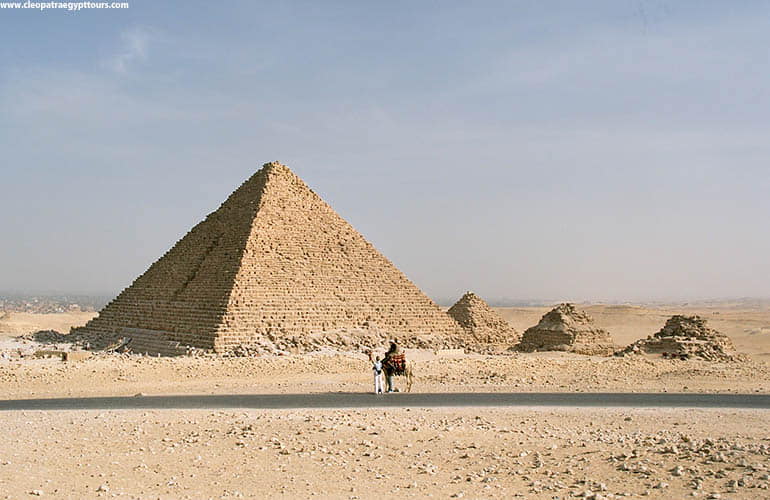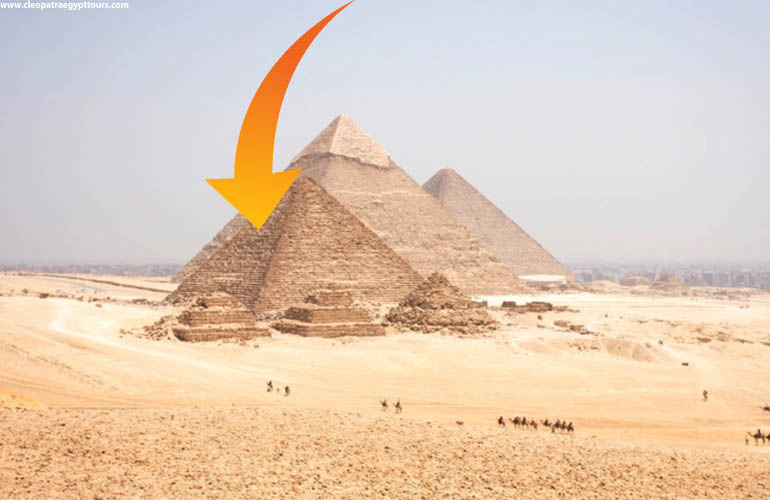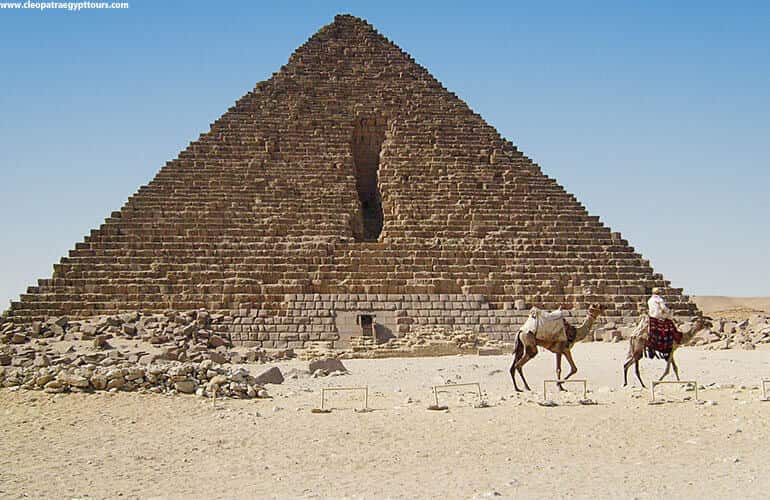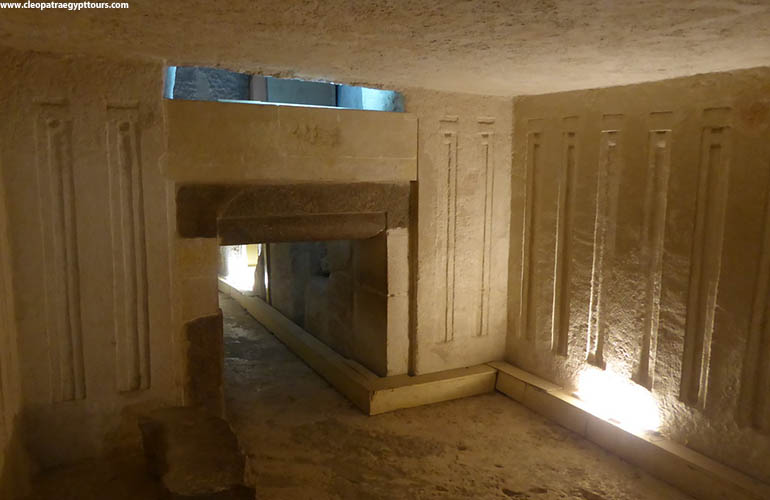-
The Pyramid of Menkaure amazing facts:

The last pyramid built on the Giza Plateau, the pyramid of Menkaure (also known as Mycerinus) has a base area less than a quarter of that of its two neighbors. Some attribute this to a reduction in the power of the king.
However, others point to a change in priorities; the size of the pyramid has been reduced but its valley and mortuary temples are larger and more elaborate.
This can perhaps be viewed as the start of a process that eventually saw pyramids abandoned, in favor of secret, rock-cut tombs with separate large funerary temples.
In the 12th century, one of Cairo’s sultans attempted to dismantle this pyramid. After eight months the project was abandoned, merely having achieved the vertical scar visible on the north face.
Inside, a passageway descends from the entrance to an antechamber decorated with a stylized false-door motif.
Beyond that is another antechamber, from where a passage leads down to the tomb chamber carved from the bedrock.
Its barrel-ceiling is carved from a giant granite roof slab. A beautifully decorated sarcophagus was discovered here in the early 19th century but it was lost at sea while being shipped to the British Museum in London.
-
Why is the pyramid of Menkaure the smallest out of the three pyramids?

The last pyramid built on the Giza plateau, the pyramid of Menkaure has a base equivalent to less than a quarter of that of the other pyramids of Giza. Archaeologists assume that the Egyptians had exhausted their economic resources, but it is equally probable that Pharaoh’s power was in decline and that it was therefore no longer possible to gather the immense workforce needed to build another gigantic monument.
Some attribute this difference to the reduction in the king’s power. Others, however, point out that although the pyramid is smaller, the valley and the funerary temples are larger and more elaborate. This can be considered the beginning of a process that ended with the abandonment of the pyramids and the spread of secret tombs dug into the rock with majestic funerary temples.
-
Why is there a big gash in the side of the Pyramid of Menkaure?

The big vertical gash on the north side dates back to the 12th century and is the work of Othman ibnYussef, son of Saladin, who had set out to tear down the pyramid.
As the eight months’ work of his workers ended in this single crack, the Sultan abandoned the idea.
-
What was inside the pyramid of Menkaure?

From the entrance, also on the north façade, a descending passage leads into an unfinished chamber, decorated with a series of sculpted false-door panels, followed by a new corridor that opens onto the funeral chamber, where a basalt sarcophagus was found, this sarcophagus lost at sea with the ship that was transporting him to England.
There is then another antechamber connected to the tomb chamber dug into the rock. The ceiling is carved out of a huge slab of granite. At the beginning of the 19th century, a wonderfully decorated sarcophagus was found, which was then lost at sea during the attempt to move it to the British Museum in London.
The pyramid is flanked by three small pyramids destined for queens, two of which, unfinished, have step seats similar to those of the Pyramid of Djoser in Saqqara.
At present, the pyramid is devoid of almost all its covering and we can observe the regular threads that make up its core. The only thing that remains is the granite part, located at the base. On the north side of the building, the pyramid has an opening apparently made by man.
During the 20th century, archaeological explorations found objects of interest, especially a basalt sarcophagus that housed a wooden coffin with a mummy inside. The basalt sarcophagus was lost during transport off the Spanish coast and there is speculation that it may have belonged to Menkaurehimself.
Book your Travel Package now to know more about Egypt history.





